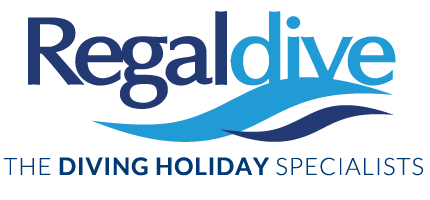- More More
- Blog
- Inspire me
- Groups
- Offers More
- Dive Courses More
- Liveaboards
More

Liveaboard Trips
On-board accommodation offering the opportunity to live right over the dive sites and to experience secluded dives...
Diving regions...
- LATEST AVAILABILITY BY REGION
- Red Sea availability
- Maldives availability
- Indonesian availability
- Socorro Mexico availability
- Galapagos availability
- ALL LIVEABOARD DIVING REGIONS
- Bahamas
- Bikini Atoll
- Caribbean
- Cocos Island
- Destinations
MoreDIVING REGIONS...
Our Top destinations....Why not try....
Find a trip
- Resort
- Liveaboard
Fall In Love With Somewhere New
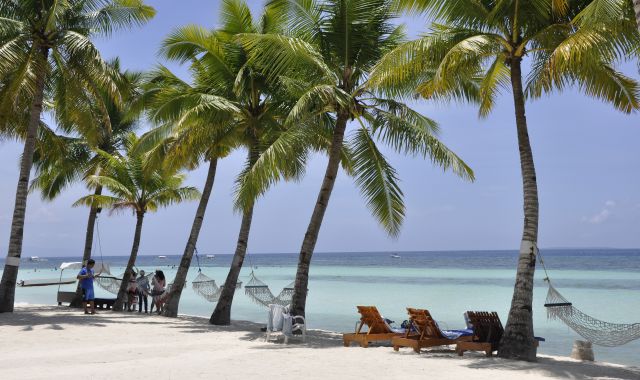
14 Feb 2018
Despite us divers believing we are an adventurous bunch we still tend to fall back on tried and tested resorts. So the next time you plan to go away, why not consider a new twist on an old friend? Here are just a few suggestions:
Red Sea: Hamata
The small town of Hamata lends its name to the region opposite the Fury Shoal reef system. This is the most southerly diving resort in the Egyptian Red Sea. The remoteness of this area - situated 180km South of Marsa Alam - makes it the ultimate in ‘get away from it all’ diving.
The legendary Fury Shoal is right on Hamata's doorstep, offering over 35 memorable dive sites. There are over 80 types of coral to discover in this region, all in excellent condition and inhabited by a rich variety of marine species.
There are very few resorts this far south, but Regaldive offer two excellent options: Wadi Lahami Azur Resort and Lahami Bay, and with direct flights to Marsa Alam from several UK airports travel to this region has never been easier.
Caribbean: Grenada
Grenada offers divers an exceptional variety of dives. There are over 30 sites concentrated around the South West tip of the island, ranging from beautiful coral gardens to adrenaline charged drift dives where encounters with a variety of rays and sharks are commonplace.
In addition to their fine reefs, Grenada is renowned for its wrecks, especially The Bianca C: a 200m luxury liner that sank in 1961. She supports a large amount of marine life and has numerous points of interest, including the swimming pool and the bridge.
For divers seeking something truly different there is Moliniere reef which has been brought alive and transformed by the work of artist Jason de Caires Taylor. His human form sculptures present fantastic photographic opportunities whilst forming a new home for marine life and give an entirely new perspective to the diver.
Indonesia: The Derawan Islands, East Kalimantan
Kalimantan is the Indonesian part of Borneo. The Derawan Islands are famous for outstanding diving; providing an amazing range of large fish species as well as plenty to please the macro enthusiasts.
Located in a biodiversity hotspot, the Derawan Islands feature 872 species of reef fishes, 507 species of coral, and invertebrates including protected species such as giant clam, two different sea turtles and the coconut crab. Some of the islands harbour the largest green turtle nesting sites in Indonesia. Furthermore, at Kakaban island you can visit one of only two non-stinging jelly fish lakes in the world.
East Kalimantan offers that rare combination of big and small marine life: the Islands’ remote location mean that dive sites are rarely crowded, marine life is abundant, and there is the chance of seeing something new each day.
Thailand: Liveaboards
The Similan Islands are located 100km Northwest of Phuket and are best dived by joining a liveaboard out of Phuket. The Islands lay claim to some of the finest dive sites in Thailand. Thriving reefs with abundant hard and soft corals highlight the dramatic terrain.
North of the Similan Islands the dive sites of Ko Bon, Ko Tachai and Richelieu Rock enjoy a deserved reputation for their big pelagic sightings. Richelieu Rock in particular attracts both whalesharks and manta rays in good numbers over the diving season.
With snow-white beaches set against picturesque granite outcrops above the water and spectacular dive sites in often crystal clear water below, it is not surprising that the Similan Islands are ranked as one of the finest dive destinations in the world.
A number of different itineraries provide divers with the choice of trip durations, from 2 nights to 10 nights, and can be combined with a land-based stay on Phuket.
We hope our small choice of alternative resorts has inspired you to look again at your tried and tested destinations. So when you are planning your next trip, instead of calling up an old friend, give serious consideration to a new relationship!
Find a trip
- Resort
- Liveaboard
Competition Winner Lynne Shares Her Trip Report!

5 Feb 2018
Lynne, the lucky winner of our terrific 7 night All-Inclusive Regaldive holiday at the Sunrise Marina Resort Port Ghalib is back in the UK and keen to share her wonderful experience with her fellow Regaldivers:
"To win a diving holiday with Regaldive was such a surprise, what an amazing Christmas present! We've been diving in Egypt before so knew a little of what to expect, but this was our first time to Port Ghalib and it was great to experience somewhere new.
The booking process was really easy and before we knew it we were landing at the airport where we were swiftly driven the short 10 minute transfer the hotel by Ramadan, our Regaldive representative. Ramadan was amazing and through his (extensive!) contacts at the hotel, managed to get us not just a room upgrade to a sea-view suite, but also full VIP wrist bands!
The Sunrise Marina Resort is a lovely hotel based right next to the marina edge, with a souk market and bars to explore. Our suite was gigantic! The all-inclusive food buffet always had an amazing selection of food, both Arabian and European, and we were blown away by the wonderful Egyptian hospitability.
We were diving with Emperor Divers, just across the marina. After a very professional briefing, we enjoyed five days of excellent local diving on the reefs around Port Ghalib, and taking relaxing surface intervals in the Egyptian sunshine. The locals all thought it was very cold and wintery, but we were basking in the 25 degree warmth and sunshine like we hadn’t seen blue sky in months! (Which was true).
We dived every day on the house reefs, short boat rides away from the base in Port Ghalib. The variety of fish and sea life and corals was stunning. They even have a resident Dugong which we were lucky enough to dive with! One day we tried to go to Elphinstone but the waves were too choppy for the journey, which was actually incredibly lucky as instead we dived my favourite dive of the holiday… we found seven turtles on one dive!
I run a blog about reducing plastic waste (www.theplasticsoup.com) and I was determined to do my bit in the fight against plastic in the ocean by doing every dive as a Dive Against Debris for Project AWARE. We were actually really impressed with the reefs that we dived – they are obviously well looked after! On the first four days we only found one or two pieces of plastic we could safely remove. Interestingly, on the last day of diving we were near an inlet where a river flowed into the sea. Here we did find a lot of plastic being washed into the sea, and during one surface interval I managed to collect over 30 pieces of plastic from the surface alone. It was mainly plastic bags, packaging, bottles and little water cups. It was really interesting to see how concentrated the plastic was in one small area.
On our last day we didn’t dive, and enjoyed the beach and snorkelling on the beautiful house reef at the marina. Our brilliant rep Ramadan had arranged an excursion for us to visit a Bedouin village in the desert, complete with a camel ride. It was the perfect way to end a fantastic Egyptian holiday, thank you so much for everything Regaldive!
Lynne Medlock"
Thank you so much for your wonderful feedback, Lynne. All of us at Regaldive are delighted you both had such a great time. Please call us when you are planning your next diving trip.
Find a trip
- Resort
- Liveaboard
Chilling in the Caribbean
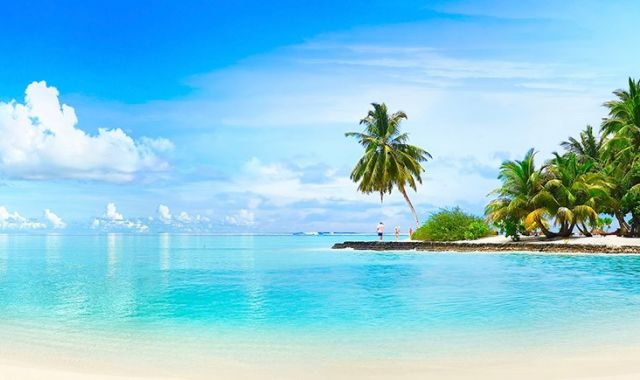
23 Jan 2018
Looking out of the office window and seeing nothing but grey skies and drizzle is the prefect motivator we need to consider a trip to somewhere totally tropical. With warm blue waters teeming with marine life, sun-kissed beaches fringed with palm trees and lush tropical rainforests the Caribbean offers travellers the perfect antidote to those winter blues.
Regaldive has a number of gorgeous Caribbean destinations to entice you.
Tobago
Tobago’s diving has a deserved reputation for enormous brain corals and thrilling drift dives. Mixed with the warmer Gulf Stream, the Guyana current flows along the island’s Atlantic coast, providing some of the most spectacular drift dives in the Caribbean. Divers can expect to see an impressive array of species including barracudas, jacks, tunas, tarpons, different type of sharks, rays including mantas and turtles.
By contrast the marine life on the Caribbean coast benefits from cooler water temperatures, less current and wind. Sheltered reefs of hard and soft corals, colourful sponges and a thriving fish population make diving the Caribbean coast a rewarding experience, regardless of your level of experience. This coast also boasts Tobago’s finest wreck, the Maverick, a former car ferry that was intentionally sunk in 1997 and lies in 30m.
Bonaire
Bonaire lies just north of Venezuela and is widely recognised as one of the Caribbean’s premier diving destinations. It rarely rains and the waters surrounding the island are rich in nutrients, giving rise to its fabulous marine diversity and beautiful fringing reef.
Bonaire is world-famous for its dive and drive packages, providing divers with complete freedom to investigate this beautiful island above and below water. Dive packages start with unlimited air access, available 24 hours a day. Shore entry dive sites are generally not crowded or exposed to strong currents. Divers often encounter turtles, dolphins, jacks and inquisitive tarpon. Seahorses, the island's emblem, thrive in Bonaire’s waters, alongside the rarely seen frogfish.
Curacao
Underwater, Curaçao has much in common with its smaller neighbouring island, Bonaire, with a fringing reef running the length of the west coast. The island's location ensures year round diving in crystal clear waters. Curaçao boasts excellent reefs with an attractive range of wrecks and has been voted one of the top three places for shore diving in the world.
The island has over 60 recognised dive sites, around 40 of them accessible from shore. There are also a number of excellent wrecks adding variety to the underwater scenery. The cargo ship Superior Producer sank just outside Willemstad harbour. Lying in 30m, the superstructure is covered in beautiful corals and anemones. A little further down the reef at Car Pile, old cars from the 1940s lie on top of one another, forming the base to a gently sloping reef.
Grenada
Grenada offers divers an exceptional range of different dives. They range in character from beautiful coral gardens to adrenaline charged drift dives where encounters with a variety of rays and sharks are commonplace.
Moliniere reef, within the National Marine Park, has been brought alive and transformed by the work of Jason de Caires Taylor. His human form sculptures present fantastic photographic opportunities whilst forming a new home for underwater sea life and give an entirely new perspective to the diver.
Grenada is recognised for its exceptional range of wrecks. In all there are nine stunning wrecks to visit, including the world-famous Bianca C. The Bianca C is a 200 metre luxury liner that sank in 1961. Lying at a gentle angle the wreck supports a huge amount of marine life and has numerous points of interest, including the swimming pool and the bridge.
St. Kitts and Nevis
Sitting north-east of Monserrat St. Kitts and Nevis offer a lovely mix of above and below water beauty. The diving is diverse, with a wealth of coral colours on shallow pinnacles, walls, sandy gullies and deeper marine sea mounts. The marine life provides divers with multiple sightings of moray eels, hawksbill turtles, jacks, barracuda and stingrays and divers will also find frogfish, seahorses and nudibranchs buried in the reefs.
On land, picturesque coves with brightly coloured fishing boats, laid back villages and lush rainforests offer the chance to experience a little Caribbean life.
Mexico
Mexico is one of the most diverse and exciting dive destinations in the world. From the world famous reefs of Cozumel to the once in a lifetime experience of diving the Cenotes, Mexico’s Yucatan Peninsula really has it all!
Cozumel is Mexico's largest island, easily accessible by ferry. In contrast with the mainland resorts, Cozumel offers a more relaxed and laidback feel and is in keeping with what one might expect from a true Caribbean island. The southern end of the island is a protected national marine park, and home to the famous Planacar Reef, named by Jacques Cousteau as one of the best scuba diving spots in the world. The island is separated from the mainland by a deep oceanic trench, creating a funnel for the consistently nutrient rich currents that guarantee exhilarating drifts and dramatic wall dives.
Experienced divers will relish the chance to explore one of the longest submerged cave and cavern systems in the world. The Cenotes are justifiably known as the jewel in the crown of Yucatan diving. Float in gin clear fresh water amongst stalagmites and stalactites, bathed in shafts of light filtering through the jungle canopy above.
With so many different islands offering experiences to suit every diver, why not consider chilling in the Caribbean this year?
Find a trip
- Resort
- Liveaboard
Lucky Lynne Stunned By Regaldive Prize Draw Win!

15 Dec 2017
Our Speechless winner...
London-based Lynne and her partner, both passionate divers, are all set to enjoy a wonderful 7 night All-Inclusive Regaldive holiday at the Sunrise Marina Resort Port Ghalib. Their incredible prize includes hand-picked return flights to Marsa Alam, resort transfers and Red Sea diving with Emperor Divers.
What’s more, advance diver Lynne also receives a haul of high-end dive gear from Mike’s Dive Store. The combined value of this incredible prize is a staggering £3,500! We can’t imagine a better way to dive into the New Year than with a diving adventure to the Red Sea.
On hearing the news that she had been picked at random Lynne was happy and speechless. She is hoping to use this unexpected opportunity to travel to Egypt to realise her dream of diving Elphinstone Reef, as an add-on excursion with Emperor Divers.
“Thank you so much Regaldive! This will be our first trip to Marsa Alarm, so we're very excited to be travelling there with you.
"The combined prize really is perfect for me as I have most of my dive kit already, but was just missing the regulators and dry suit... so it's such a super coincidence that those were the prizes from Mike’s!”
Lynne has promised to share memories of her surprise Regaldive holiday with all of us on her return from Egypt, in a Special Trip Report for the Regaldive blog. Watch this space for her winner’s write- up…
Finally, warmest congratulations to you, Lynne, on behalf of Regaldive and Mike’s Dive Store on your prize – we're all wishing you the most wonderful Red Sea diving holiday !
Find a trip
- Resort
- Liveaboard
Green Turtle Hatching Event | Siladen Resort & Spa, Manado
11 Dec 2017
Our delighted customer returned from a diving holiday at Siladen Resort & Spa, in Manado, with some very special memories indeed. Here he describes for us the evening 140 Green Tutles hatched and made an epic journey into the protect waters of the Bunaken National Marine Park:
Who wouldn't love to witness a turtle hatching in person?
On track & Heading off into the sea...
"Everyone was finishing up their evening meal when Mike and Nathalie went to check the turtle nests. There were signs of movement! When this message came, the restaurant soon emptied as everyone left for the turtle nests.
"Finally, one little head poked out and the baby turtle was soon heading rapidly down a specially-prepared track to the sea with vocal support from guests.
"The second and third turtles emerged slowly. The second appearing very tired, probably because the rain had compacted the sand on top of the nest making it hard work to dig itself out. The third turtle headed off, but kept trying to escape from the track by climbing the side wall. After a little guidance it too was on track and heading off into the sea.
"While the second baby turtle rested, it was soon joined by more and finally a rush as most of the 140 baby turtles emerged and headed off for the water in a big group. After about 20 minutes more it was all over and all 140 baby turtles were heading off to life at sea.
"Hard to believe but in thirty years probably only one of them will come back as an adult to lay eggs on the same beach.
"When Mike and Nathalie were digging out the nest the following day, to make room for a new batch of eggs, one final baby turtle was found. It was very strong and it too then made its way into the sea."
To find out more, call our friendly team on 01353 659999 or visit Silden Resport & Spa
Find a trip
- Resort
- Liveaboard
New to Regaldive - Villa Michael in Malta
3 Oct 2017
Villa Michael is a lovely, newly refurbished Villa offering comfortable holiday accommodation. Directly on the seafront, this property boasts breath-taking, unobstructed 180 degree views across Qawra bay.
Guests can step out of the Villa and straight onto the seafront promenade leading down to the shoreline, perfect for swimming and snorkeling. The property is three minutes’ walk from the Malta National Aquarium and popular evening hotspot Cafe Del Mar. It is also just three minutes’ from Qawra point dive site and the enclosed swimmers zone.
Malta’s calm warm seas make for excellent visibility and superb conditions for tackling everything from diving courses, to underwater photography, to wreck and deep diving. One great advantage of diving in Malta is that being such a small island, it is easy to get around. Most of the dive sites are shore-based, easily accessible by road at many points around the coast. Malta is well known for offering plenty of wreck diving opportunities.
Villa Michael is an attractive holiday villa with three double bedrooms comfortably accommodating up to six people, making it ideal for small groups. All bedrooms have ensuite shower rooms with single bed or double beds, according to your request. All of the bedrooms have new ensuite shower rooms.
The Villa features a large living space with full sea views, as well as a dining room. The newly fitted kitchen is equipped with an oven, electric hobs, large fridge and freezer, microwave oven , dolce gusto coffee capsule machine and dishwasher. The kitchen leads out onto a spacious outdoor terrace & BBQ area overlooking the sea. The roof top sun terrace has unobstructed 180 degree sea views.
To find out more, contact our friendly team on 01353 659999, or visit: Villa Michael
Find a trip
- Resort
- Liveaboard
Cocos Island Liveaboard Adventure - John's Trip Report

21 Aug 2017
Here John shares some of the many highlights from his recent Cocos Island liveaboard trip aboard Okeanos Aggressor II:
All Good Things…
There's a saying that goes along the lines of good things coming to those who wait, and patience is the key when it comes to diving Cocos. It's nothing like the Red Sea, where you fly out one day and are in the water by 10am the next. Cocos involves a flight across to the Atlantic and at least one overnight in San Jose, Costa Rica, followed by a two hour bus ride to the coast.
The boat (in this case Okeanos Aggressor II) then departs from the port of Puntaranas, That's when the waiting really starts, as it's then a 36 hour sail out to the island that's 340 miles out into the Pacific Ocean. You arrive at night, so it's up to 46 hours before you get in the water.
So, is it worth the wait I hear you ask? You bet it is! In a documentary made a few years ago, Cocos was named 'The Island of the Sharks' and for good reason, as we found out over the next 7 days diving. In fact we started to get an idea of how ‘sharky’ things were going to be on the check dive. Of course they are normally nice easy dives and never usually the most exciting locations.
The briefing had informed us that we would roll off the RIB into 5 metres of water and max out at about 16 metres. Doesn't sound that exciting does it? But that soon changed when the first two guys hit the water, they bobbed straight back up shouting 'Tiger Shark - right under the boat!' So we all entered the water as quickly as possible, but of course with all the commotion, it had disappeared. Not to worry as there would be more later in the week. We saw loads of Whitetips and even a few Hammerheads - not bad for a check dive!
It may surprise you to know that we only dived eight different sites during our week at the island and there are a lot of similarities between them, but we never got bored. All our dives were spent looking for sharks, which wasn't hard, as they found us. Out of 24 dives we saw loads of Whitetips on every single dive. The other RIB divers were even lucky enough to witness some mating, not many people have that in their logbook! We did three night dives and the Whitetips attracted by the lights of our torches, like moths around a flame. Things certainly got a bit frenzied, as they used the light to help them hunt.
Mostly the diving involves descending down with the wall of one of the smaller islands to your back, or to the top of a sea mount and find the cleaner fish at the numerous cleaning stations. Here the sharks come in to be cleaned and by holding onto the rocks and keeping very still, they come nice and close. There are some reasonable currents, but they are not too much bother, as you very rarely swim against them. It pays to keep your eyes darting in all directions though, as a few times lovely Whale Sharks would swim above you, a sleek Galapagos Shark would check you out, or a curious Tiger Shark would pass quite close. I suppose I should mention that my buddy had a Tiger Shark pass by within a few feet and I didn't see it as I was looking the other way, not my greatest moment in diving.
But there is one undoubted star of the show at Cocos, and that's the Hammerheads. Hundreds and hundreds of Scalloped Hammerheads. Occasionally in bigger schools, but always about, either singly or in groups of 15 or 20. All hanging around to come in to the cleaning stations and that's where you get your chance to see them up close and personal. They come in until they are in just the right spot, then tip their bodies back and hover in the current as the cleaner fish rush in. When done they often swim really close. Having one after the other swim within a few feet of you is certainly worth the effort to get to Cocos. Impressively, we saw Hammerheads on every one of the 21 day dives.
Watching the different behaviours of the various shark species is what keeps you enthralled for the whole week. Going back to the same dive sites a few times was not an issue, as every time something different would happen and even when we did have a chance to go around to the south of the island, most people decided to stay and dive Manuelita or Dirty Rock again. If you do want to see some smaller critters, there were some very friendly Frogfish that posed quite nicely for the photographers. But even when we were looking for them, we had to make a quick change of plan when a huge Whale Shark circled us twice.
Eventually of course, we had to turn for home and the forest covered island with the sun setting behind certainly made a great sight, as it slowly shrank from view. On the return journey there was plenty of time to discuss the week with our companions and start the editing of the numerous photos and hours of video. The Okeanos Aggressor II and its crew looked after us very well. The dive guides were great, the crew very attentive and we were well looked after with some excellent food.
So finally, the question as to whether Cocos should be on your dive wish list, it's most definitely a 'yes' to that one!
To find out more, call our friendly team on 01353 659999 or visit Okeanos Aggressor II
Find a trip
- Resort
- Liveaboard
Best Wreck Diving Holidays
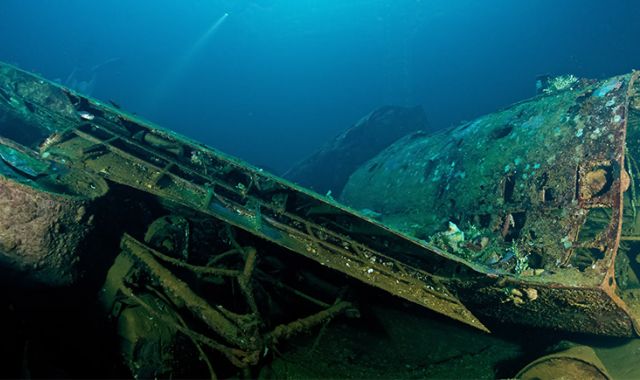
1 Aug 2017
World's Best Wreck Diving Destinations:
Rust lovers. Metalheads. They go by many names, but they all have one thing in common: their enduring fascination with underwater history. Yes; rusting metal. But what an array of history can be found beneath the waves…
A destination bound to excite all wreck lovers is Truk Lagoon – one of the most famous concentrations of wrecks in the world. Final resting place for an entire Japanese fleet sunk in 1944, the wrecks include a submarine, jeeps, tanks and fighter planes. Truk Lagoon is a dream destination and one which all wreck lovers should experience.
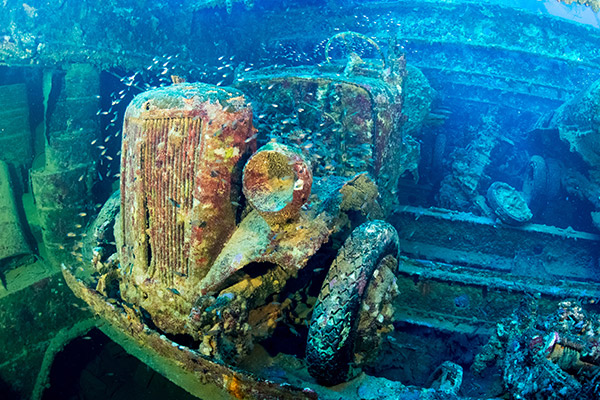
Malta – one of Regaldive’s most popular destinations - is only a three hour flight from the UK and boasts a large number of wrecks to enjoy. Lying at 14m in Valetta harbour is HMS Maori: a British destroyer sunk in 1942. Another famous Maltese wreck is the Bristol Blenheim Bomber. One of five known wrecks of its kind, the engine and wings are intact at 42m and make a memorable dive for experienced divers. Another wreck for the more experienced diver is the Imperial Eagle; a former ferry and the sister ship to Cousteau’s Calypso.
An Egyptian liveaboard is the place to be if you want to visit the best wrecks the Red Sea can offer. Regaldive offer itineraries including the most famous Red Sea wrecks: the Dunraven at Ras Mohamed, the Rosalie Moller and the most famous wreck of them all; the mighty Thistlegorm. 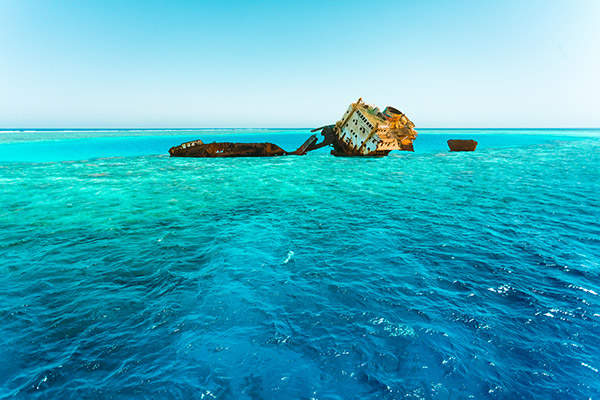
In the early 1960s, Jacques Cousteau placed Sudan firmly in the psyche of divers with his experiments in underwater living. The remains of his Conshelf II “village” provide a fascinating window into this unique chapter of diving history. Directly out of Port Sudan lies the Umbria: an Italian cargo ship deliberately scuppered at the beginning of WWII to avoid it falling into British hands. The holds are easily penetrated and the cargo (ranging from ammunition and military vehicles to wine) is still there to be explored. Fans of the Red Sea seeking a new challenge should ask Regaldive for details on a Sudan liveaboard.
Known as the “wreck capital of the Caribbean” Grenada is recognised for its exceptional range of wrecks, and is renowned for one wreck in particular: the Bianca C - a 200m liner that caught fire and sank in 1961. With her deck sitting at 35m, the wreck supports a large amount of marine life and has numerous points of interest, including a swimming pool and the bridge. At the bow divers can see large pelagics including schools of barracuda and tuna, as well as passing eagle and manta rays.
The Veronica L, a highly photogenic wreck that makes a fantastic night dive, is festooned with colourful soft corals, sponges and marine life. The open hold, crane and surrounds of this 25m cargo ship are home to seahorses, moray eels, frogfish and octopus. 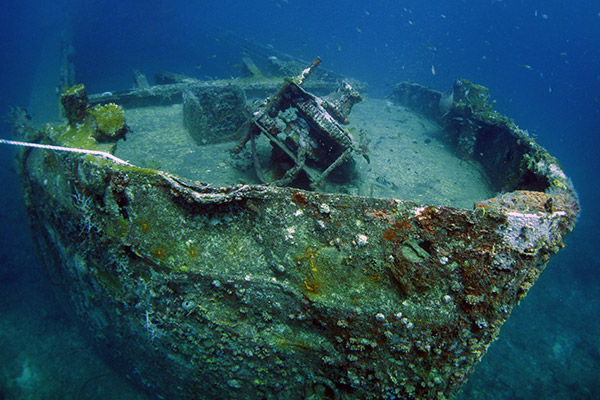
Divers visiting Busuanga Island, Philippines are ideally placed to dive the Second World War Japanese wrecks of Coron Bay: some of the best preserved in the world.
There is nothing quite like the feeling of sitting on a boat knowing that you are about to dive one of the most famous wrecks sites in the world. Each site has its own unique beauty, is mostly intact, within recreational diving limits and full of history. Happy diving, metalheads!
For help with planning your next wreck diving adventure, call us on 01353 659999 or send us an email.
Find a trip
- Resort
- Liveaboard
John Butland Enjoys His 500th Dive at Oasis in Marsa Alam
19 Jul 2017
On my recent trip to Marsa Alam I also spent a very nice day with the team at Oasis Dive Resort. A location that's all about making the most of the great diving in the area, plus comfortable accommodation and good food. A tour of the rooms showed them all to be spacious and all with nice views over the sea.
The diving options include their lovely house reef, or trips by road to dive sites to the north and south. The minibus pulls up to a beach with all your dive kit already laid out on a big rug to keep the sand away. This type of diving is perfect for those that don't want to be out on a boat all day, or on and off a RIB. A leisurely kit up and you can walk straight into the water.
So, the first dive of the day was a very special one for me, my 500th dive. I learnt to dive in May 2002 and was immediately hooked. To say my life started to revolve around diving is an understatement, then even more so when I joined Regaldive in 2012. Certainly learning to dive was one of the best decisions I ever made.
The dive at Oasis was in a bay with reef either side and sea grass in the middle. They do have a resident Dugong there and I was hoping he would show up to help me celebrate my special dive, but I think the party invitation must have got lost in the post. I was lucky enough to see the one that lives up near Port Ghalib on dive 499 though, so close enough for my first Dugong. There was a very big Green Turtle munching away on the sea grass though and he posed nicely for some pictures and video.
Then we finished with a pleasant meander around the pretty reefs nearby to check out all of the usual Red Sea life. Those pesky Pipefish never stay still long enough for you to get a decent picture, I often wonder how some people get those close up pictures that you see.
So, it was an enjoyable end to a great week in the Red Sea and here's looking forward to the next 500 dives!
The Oasis Dive Resort is an intimate, appealing hotel with a rustic and friendly feel. Ideally suited for divers and for those seeking tranquillity, it has a rural location on a long beach just north of Marsa Alam. The hotel has 49 chalets arranged around the main building in the form of a pretty Bedouin village with small alleyways and winding steps of fossilized coral stone. The resort stands out with its unique architecture and intimate ambience. The views from the terraces are fantastic.
Find a trip
- Resort
- Liveaboard
Sharks: Wonderful Beasts and Where to Find Them
5 Jul 2017
WORLDWIDE OPTIONS FOR DIVING WITH SHARKS include:
GUADALUPE ISLAND
Dive to 30 feet and go face to face with great white sharks! Guadalupe Island is a volcanic island 150 miles off the west coast of Baja California and it outperforms every other great white shark destination with shark-seeing consistency and beautiful diving conditions.
Great white shark encounters at Guadalupe Island are nothing short of spectacular. It’s the best destination in the world for calm, clear water and a consistently high probability of multiple shark encounters. The bay itself is home to over 200 recognised individuals, ranging from 12 to 19 feet long. At times, guests have seen as many as nine sharks on one dive!
SOCORRO ISLANDS
The wild, remote and exhilarating Socorro Islands, Mexico are famous for their big animal encounters. Divers will see many species of shark, including Hammerheads, Whitetips, Silvertips, Silkies, Tiger & Galapagos Sharks. Whale sharks can be found between November - December and late April - May.
The area is also famous for close encounters with the Giant Pacific Manta Ray, which can grow to 22 feet across. The Mantas seek out divers to interact with and play in their exhaled bubbles. There’s little doubt that this is the best location for the closest Manta interactions.
SOUTH AFRICA
If you want some great shark action, what could be better than the shark hotspots of South Africa and Mozambique? Although there's always plenty to see, including Hammerheads, Tigers, Blacktips and Bulls, May is the time that the Ragged Tooth Sharks take up residence on Aliwal Shoals. A shark to impress your non-diving friends, as with their mouth full of big teeth, they look far scarier than they actually are. ‘Raggies’ usually stay until at least the end of November, so now's the time to plan your visit.
THE MALDIVES
The Maldives is a popular location for seeing a few varieties of shark, most commonly Whitetips and Grey Reef Sharks. Although the Whitetips are usually very calm and lethargic during the day, they certainly get a bit more active at night. Often seen darting around the reef, trying to beat each other to the next unsuspecting fish to snack on.
Our guests returning from Maldives Liveaboards are giving enthusiastic reports from of a very interesting night dive they took part in. Many of them have greatly enjoyed doing a night dive with Nurse Sharks. Although one of the most docile of sharks, it turns into a very exhilarating experience when you get 40 to 50 Nurse Sharks swarming all around you! Just hang onto your gear and prepare for the odd nudge.
THE BAHAMAS
The Bahamas are justifiably famous for their shark diving. Some sharks can be seen very close and personal, mainly Caribbean Reef Sharks, Nurse Sharks and Lemon Sharks, but others such as Bull Sharks, Hammerheads and even Oceanic Whitetips can all be found, with the waters of Nassau and the Exuma Cays being the most easily accessible areas.
A famous location that is worth a visit in June, July and August is Tiger beach. So called because of the numbers of Tiger sharks that turn up in the warm shallow waters at that time. Known for coming in nice and close, some of the individual sharks, such as Emma, are famous the world over. With years of experience the operators that visit the area will provide you with an experience that you will have difficulty finding anywhere else.
SUDAN
Many of Sudan’s varied dive sites hold an almost mythical status with divers from around the world. Sudan’s coastal waters are also recognised as one of the best places in the world for Shark enthusiasts to encounter schools of scalloped hammerheads, alongside many other species of shark.
Our colleague Nigel gave us a taste of the shark action from his recent trip to Sudan and told us: "we were joined by a huge school of hammerhead sharks: above us, below us, in the distance, right next to us: they were everywhere. We were all trying to look in every direction at once. When we got back on board my partner said it had been 'raining hammerhead sharks'. We all knew what she meant."
THE GALAPAGOS
The seas surrounding the Galapagos support a large concentration of the marine life that makes these islands such a superb dive destination. Certainly no dive itinerary to the Galapagos is complete without a visit to the remote outposts of Wolf & Darwin to the north. Schools of hammerheads, as well as dolphins and rays make these islands a real highlight for divers. The whale shark aggregation occurs in the warmer water surrounding these islands. Many other shark species also make regular appearances, including species that you are unlikely to see elsewhere, including the Galapagos Shark. Although Hammerheads are seen year round, the biggest aggregations are usually in the Autumn.
THE RED SEA
The Red Sea has always been good for sharks, but the last couple of years have been exceptional, especially on the 'Simply the Best' itinerary. Maybe it's because there are less divers about. We are hearing feedback such as "saw hammerheads on every dive at Daedalus" and "great to get so close to so many Oceanic Whitetips" from those on our Red Sea Liveaboard trips. The best times for these encounters now seems to be starting a bit earlier too, around June, and running right through to November.
COCOS ISLAND
A few years ago Cocos Island was christened ‘The Island of the Sharks’ by documentary makers, and with very good reason. This lush, green, uninhabited island, 340 miles from the Pacific coast of Costa Rica, boasts numerous species of shark, including Whitetips (on every dive!), Tigers, Whale Sharks, Silkies and Galapagos Sharks.
But the biggest draw here is the Hammerheads that come into the numerous cleaning stations, allowing easy, close up viewing. Also they can often be seen schooling in their tens or even hundreds, so keep your fingers crossed for that amazing experience.
The UNESCO designated World Heritage Site certainly holds its place at the pinnacle of the world’s best shark diving locations.
To find out more about our shark diving locations, call our friendly team on 01353 659999.
